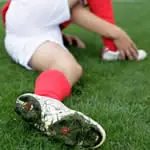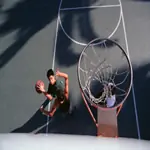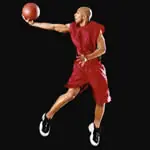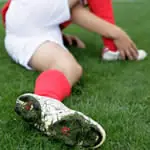When guarding an opponent who is advancing the ball up the court, do the following: pick-up, lead, and influence.
Picking Up
As the dribbler approaches, make sure that you are moving at the same speed and in the same general direction. If the dribbler is moving much faster than you, there is little chance of you guarding him/her.
Leading
As you are moving with the dribbler, make sure that the position of your body in relation to his/hers is such that you remain ahead of him/her; arm's length is the norm, closer if you are quicker, and farther if the dribbler is quicker.
Influencing
Once you are leading, you are ready to influence the dribbler by maintaining your position, closing the door, or freezing.
Maintaining Your Position
By continuing to lead, particularly if you are at arm's length or closer, you can lead the opponent toward the sideline. For example, approaching the centre line, the dribbler is in the centre of the middle lane, coming right at you. As you pick-up and lead the dribbler, he/she, who is dribbling with the right hand, moves at a 45-degree angle to the right. By maintaining your position, the dribbler will end up in the side lane, heading directly for the sideline.
Closing the Door
As you are leading the dribbler, suddenly and without warning move directly into his/her path, so that, were the dribbler to continue, he/she would commit a charging foul. This manoeuvre will force the dribbler to stop and end the dribble or to change direction with a crossover or reverse dribble. Closing the door can be a cue for a teammate to double team, particularly if the dribbler uses a reverse dribble.
Freezing
This play option involves initiating, but not executing closing the door. This manoeuvre can cause the dribbler literally to freeze, that is, hesitate or stop advancing.
When your opponent ends the dribble, do not try to block all the passing lanes. Focus on blocking the penetrating passing lane to the basket. Doing this makes it easier for your teammates to deny the other passing lanes.







Discuss This Article